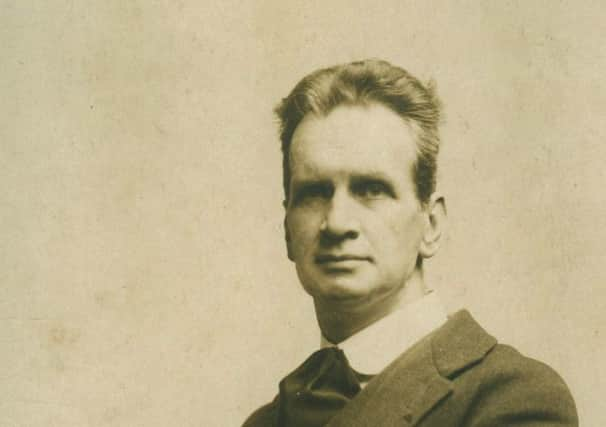Art review: Henry Taylor Wyse


At 83 pages, it is not exactly a tome, but organised on a balance between chronology and Wyse’s varied activities, it is full of information.
The principal exhibits in the Edinburgh exhibition reflect the fact that Wyse was the motivator and also chief designer for a pottery that flourished in Edinburgh for a dozen years from 1917, first as Wyse and Isles (who Isles was is a bit of mystery) and then as the Holyrood Pottery. The recruitment of George Griffiths, an experienced potter, was crucial to the success of the enterprise.
Advertisement
Hide AdAdvertisement
Hide AdA Wise Man Knows His Craft: Henry Taylor Wyse and Holyrood Pottery ***
Edinburgh Museum
The pots on display are characterised by simple shapes, but especially by rich, deep glazes in intense colours. These are mostly variegated, often with contrasting colours bleeding into one another.
A typical example is a tall vase. The lower part is mottled deep red, but by the potter’s alchemy this shifts to a rich purple-blue in the neck. Other pots with similar glazes are decorated with oriental motifs, one lovely plump vase, for instance, with fish, water and lotus leaves.
The pottery also produced more everyday objects such as buttons, but these were made to the same high standard and have the richness and depth of semi-precious stones.
The pottery’s and to an extent Wyse’s skill with glazes was remarkable. The pottery also supported other art potteries such as Mak’Merry.
The exhibition also includes a number of Wyse’s paintings and publications, for he was much more than a potter.
Born in Glasgow he was brought up in Dundee. Wyse trained at Dundee School of Art, at the time part of the High School of Dundee. He then went on to teach, first at Coatbridge and then at Arbroath High School.
Advertisement
Hide AdAdvertisement
Hide AdIn Arbroath he was associated with James Watterston Herald, to whose work his own bears some resemblance, but both look back to the ‘blottesque’ technique of Arthur Melville, but Wyse favoured pastel, not watercolour.
He was already branching out, however. He and William Middleton, a cabinet maker, began to produce furniture to Wyse’s design and between 1900 and 1902 he pubished catalogues of their designs.
Publishing, lecturing and organising classes for art teachers, he also became an active campaigner in the field of art education. Elected first president of the Scottish Art Teachers Association in 1902, at the same time he saw a cherished ambition realised when the SED established a School Leaving Certificate, ancestor to the modern Standard Grade, in drawing, a huge step in the recognition of the importance art in education.
As part of his wide-ranging activity while in Arbroath, Wyse began to design and publish his own books including works on drawing, design, art education and other related matters.
Much later, but true to the political character of the Arts and Crafts Movement, in 1943 he published in a collection of nonsense verses a Ballad of Common Wealth, Beveridge Plan.
Many of his interests and ideas chimed closely with those of Patrick Geddes, who held the chair of Botany in Dundee during the years Wyse grew up in the city and while he was teaching in nearby Arbroath.
With his rising reputation, he was recruited as head of the art department at George Watson’s Ladies College in Edinburgh.
Advertisement
Hide AdAdvertisement
Hide AdThe school was in George Square and in its premises in the Boroughloch, the Holyrood Pottery was just the other side of the square.
He remained in his post at the school till he was appointed Principal Lecturer in Art at the Edinburgh Provincial Training College, later to become Moray House.
Wyse liked to document his life and in old age produced an illuminated manuscript, The Story of the Holyrood Pottery.
He patented a method for marbling paper, even made his own pastels. He was indeed a man of many gifts and of remarkable enterprise. It is wonderful to have his achievements recognised.
*A Wise Man Knows His Craft runs until 30 October. Henry Taylor Wyse, Artist, Teacher, Craftsman is published by Aberbrothock Imprints, www.aberbrothockimprints.co.uk. and Heather Jack.